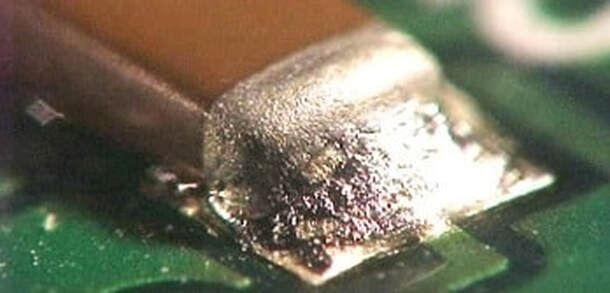Comparison of SAC305 and SAC387 Lead-Free Solder Alloys |
|
SAC 305 and SAC 387 are both solder alloys commonly used in electronics manufacturing and soldering applications. They belong to the SAC Tin(Sn)-Silver(Ag)-Copper(Cu) family of solder alloys, but they have different compositions and properties. Here's a comparison between SAC 305 and SAC 387:
SAC 305 Lead-Free Solder Alloy
- Composition: (The numbers 305 indicate the percentages of silver and copper respectively)
- Tin (Sn): Approximately 96.5%
- Silver (Ag): Approximately 3%
- Copper (Cu): Approximately 0.5%
- Melting Point: SAC 305 has a melting point in the range of 217-220°C (422-428°F).
- Characteristics:
- Good wetting properties.
- Good electrical conductivity.
- Strong and reliable solder joints compared to low-temperature solder alloys.
- Good corrosion resistance.
- Common Uses: SAC 305 is widely used in surface-mount technology (SMT), through-hole soldering, and reflow soldering processes for various electronic components.
SAC 387 Lead-Free Solder Alloy
- Composition: (The numbers 387 indicate the percentages of silver and copper respectively)
- Tin (Sn): Approximately 95.5%
- Silver (Ag): Approximately 3.8%
- Copper (Cu): Approximately 0.7%
- Melting Point: SAC 387 has a slightly higher melting point compared to SAC 305, typically around 219-225°C (426-437°F).
- Characteristics:
- Good wetting properties and enhanced solderability due to a higher silver content.
- Improved Electrical Conductivity due to higher silver content.
- Strong and reliable solder joints compared to low-temperature solder alloys.
- Enhanced Corrosion Resistance due to higher silver content.
- Common Uses: SAC 387 is used in electronics soldering applications where component solderability is a challenge, corrosion is a possibility and/or low electrical resistance is needed.
The choice between SAC 305 and SAC 387 depends on the specific requirements of the soldering application, including the materials being joined, the soldering process, and the desired properties of the solder joints. Both alloys offer good performance and reliability, although SAC305 is more widely used due to its lower cost and better availability - SAC387 tends to be used in more challenging applications.
|
Return to home page
|

